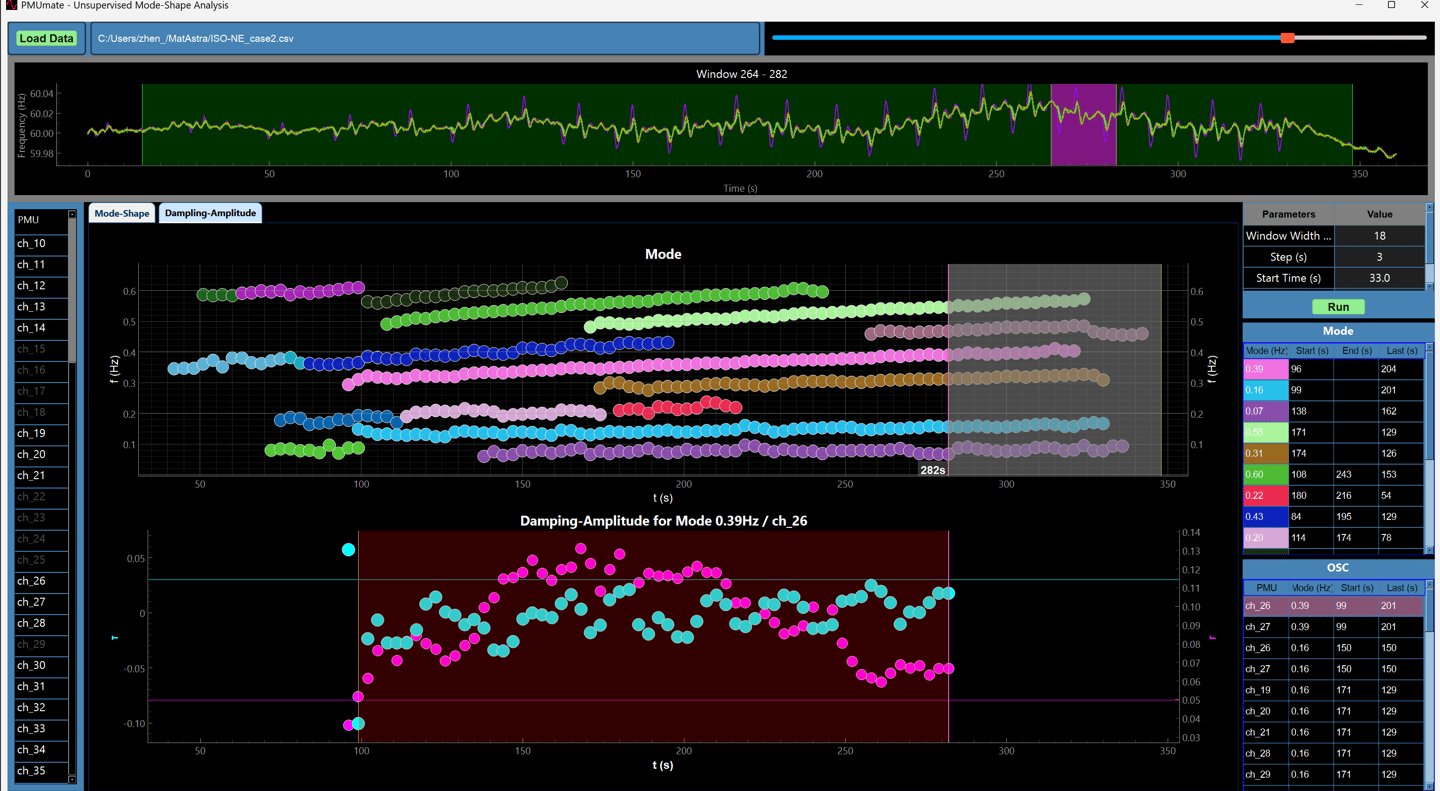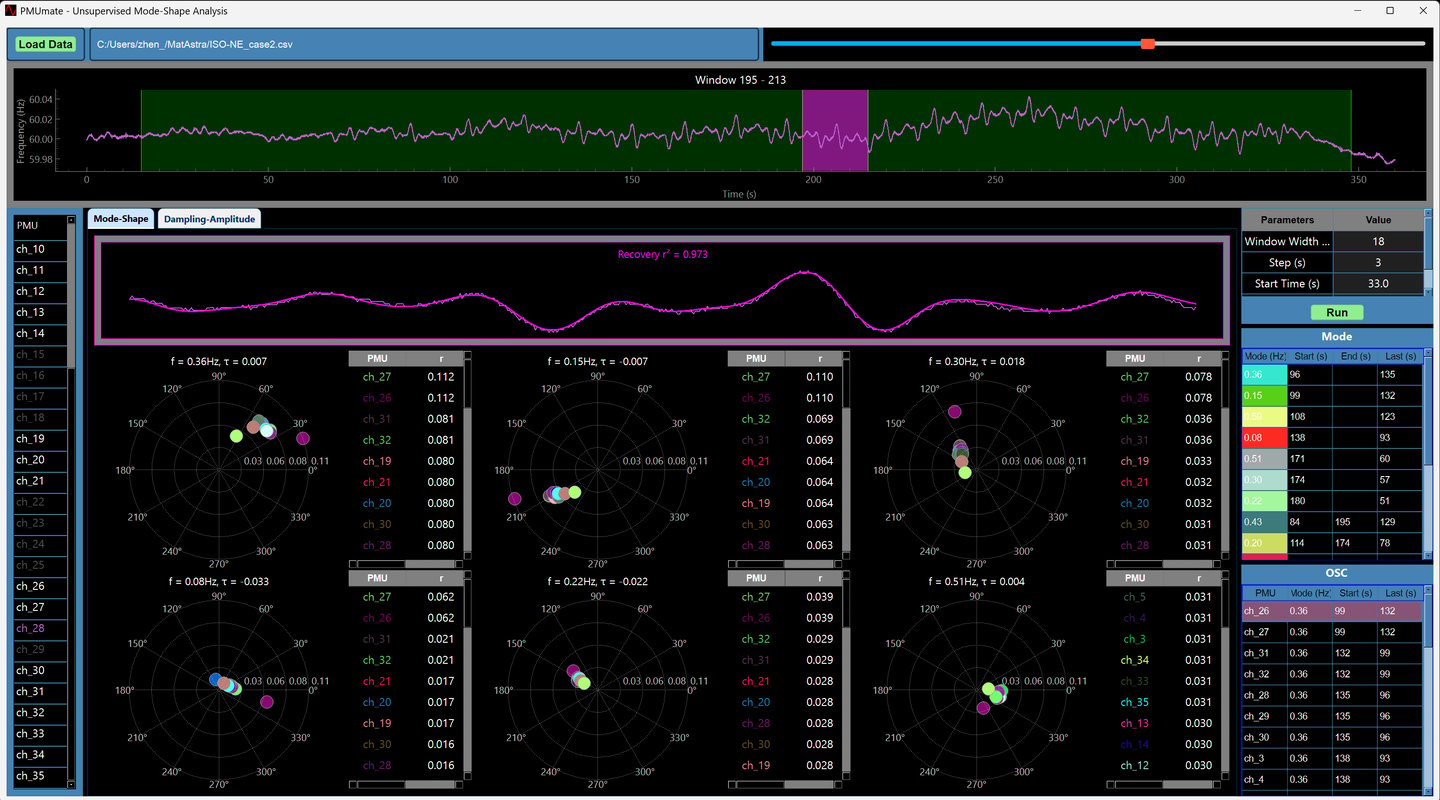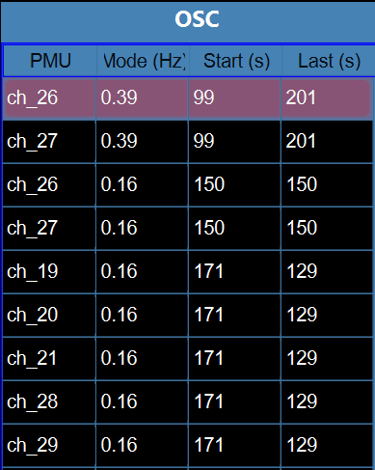PMUmate
Mode-Shape Insights
Advanced Off-Line Multi-Channel PMU Signal Analysis
Mode-Shape Analysis Across Channels - Extract and visualize mode shapes from synchronized PMU data to uncover system-wide dynamic behavior.
Automatic System & Mode Order Detection - Leverage intelligent algorithms to estimate system order and identify dominant modes—no manual tuning required.
Robust Noise Filtering - Apply advanced preprocessing to isolate true oscillatory content from measurement noise and ambient disturbances.
Time-Evolving Modal Characteristics - Track damping, amplitude, frequency, and oscillation of each mode using sliding-window analysis across the full event timeline.
Full-Event Playback & Visualization - Replay dynamic system behavior with synchronized multi-channel plots, enabling intuitive exploration of transient events and modal evolution.
Mode-Shape Insights Across Channels
Demo
Data source - ISO New England oscillation data https://web.eecs.utk.edu/~kaisun/Oscillation/actualcases.html (ISONE-case2)
Sampling rate - 30Hz
35 Channels
Event length - 360s
Dominant modes - 0.08Hz, 0.15Hz, 0.31Hz
PMUmate setting
Sliding window width - 18s
Marching step - 3s
Mode extraction in fractions of a second
Accurate signal recovery
Advanced aggregated playback visualization


Time-Evolving Mode and Oscillation Analysis


Accurate original signal recovery
Threshold-Based Mode Oscillation Detection
All channels that exceed both damping and amplitude thresholds for more than 60 seconds at a specific mode are automatically identified.
Example:
As shown in the table, Channel 26 at 0.39 Hz exhibits sustained modal activity. Both damping and amplitude values exceed their respective thresholds starting at 99 seconds, and persist for a duration of 201 seconds.
This capability enables targeted detection of system-wide oscillatory behavior, supporting early warning, root-cause analysis, and dynamic stability assessment.
Mode evolving , visualization, and event playback




Oscillation-prone channels are identified by continuously tracking the damping and amplitude of each mode across all PMU channels and flagging those that exceed thresholds over sustained durations.


Oscillation prediction threshold
damping = 0.03
amplitude = 0.05


+1 608-588-6418


info@matastra.com
